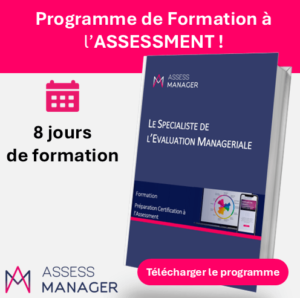Depending on whether we are talking about managerial agility and the 4 management styles of Hersey and Blanchard, agile management or lean management, we are not referring to the same thing… So let’s clarify these 3 concepts to avoid confusion…
4 Management styles, agile management, lean…
Let’s clarify these concepts, shall we? There is sometimes confusion between agile management and managerial agility, and also between agile management and lean management.
We clarify these 3 concepts with clear definitions, examples and skills.

Introduction to agility concepts
The term “agility” refers first and foremost to the ability to change one’s body position quickly and conveystheidea of flexibility, coordinated movements and reflexes.
So we have several underlying ideas:
- An ability to adapt
- A form of acceptance of change in everyday life
- Reflexes, linked to methods learnt to be creative and fast.
- Agile management is a method, a production system, a way of organising a team of developers so that it succeeds in delivering to its customer in a complex and uncertain situation. It is a system for optimising projects and time, with the primary aim of optimising deadlines, even if this parameter alone is not enough.
- Lean management is more of a learning system, a set of practices aimed at developing employees’ skills to achieve a higher level of quality. It is a system of continuous improvement. It aims for quality.
- Managerial agility is more a question of the manager’s ability to adapt as effectively as possible to the situation and the people involved via 4 management styles: it is the manager’s ability to adopt “the right stance”, which requires both an analysis of the situation (urgency, quality, cost, deadlines, etc.) and a psychological and technical analysis (motivations, skills, culture). It aims to optimise human resources. It can also be associated with the concepts of emotional and intellectual agility.
What is managerial agility?
Managerial agility is linked to 3 forms of agility:
- 1. Intellectual agility
This enables you to deploy real teaching skills, in particular by adapting your brain to that of the people you are dealing with in order to create the message for the other person and not for yourself. - 2. Emotional agility
Emotional agility enables you to use your emotions as a resource: to feel things for yourself and for the people you are talking to. This enables you to show empathy with your teams to promote mutual understanding.
Agile projects and lean management will benefit from managers who demonstrate managerial agility to support change.(Emotional Intelligence File) - 3. Situational agility and the 4 management styles
Situational agility allows you to use several management styles depending on the situation and the people involved. Situational management is a fairly exact science: you don’t manage the way you like, you manage according to the situation..
The best possible choice of one of the 4 management styles can be learned, and there are codes for understanding it. It’s a lot of common sense, but it goes much better when it’s explained… These few examples will show you that common sense plays a big part, but situations are not always so obvious:
- You’re in a hospital emergency department, and a patient’s vital diagnosis is at stake. Will you choose participative management?
- A member of staff is trembling at the thought of giving a presentation on a subject that he hasn’t mastered properly. Is this the right time to use delegative management?
- An employee is very stressed and has been working a lot lately. You’ve got a big job to hand in and you’ve thought about him. Is this the right time to use directive management?
- A very experienced member of staff is about to take over the management of a new department, and you want to give them a sense of direction for their future role. Is it paternalistic management and the associated tone that he will appreciate?
That’s what situational management is all about: using the right management style to deal with an employee in a given situation, taking into account who they are: their self-confidence, their professional maturity and their motivation.
These concepts are similar to the Blake and Mouton model in a modernised form, and are directly linked to managerial leadership.
How do you detect a manager’s managerial agility in the Assess Manager test?

These are the indicators measured in the management test:
Intellectual agility,emotional agility and situational agility are directly measured and reported in the form of explicit graphs, as is a manager’s propensity to use each of the 4 management styles.
What is agile management and how does it work?
Agile management – BUILDING – is all the more important in an uncertain environment, which is becoming a dominant feature of our current environment: changing, complex, uncertain. The COVID crisis has reinforced this trend, even though it no longer needs to be proven.
Agile management was born out of project management in the IT world, and software development in particular. In 2001, 17 people came together to agree an initial definition or practices required to consider a set of key success factors in a document entitled “Manifesto for Agile Software Development”, highlighting the following values:
- People and their interactions rather than tools and processes
- Operational functionality rather than extensive documentation
- Collaboration with the customer rather than contract negotiation
- Adapting to change rather than following the plan.
As a result, traditional project management methods have been challenged in favour of agile methods, which are based on an iterative and incremental approach, carried out in a collaborative spirit, with just the right amount of formalism. The aim is to produce a quality product while taking account of changing customer needs.

Training offered: We can help you to get to grips with the questionnaires
questionnaires and interpreting the results.
Register for sessions via your partner area
What management style does the agile manager use most?
They will use participative management a lot, without, however, failing in their ability to take decisions, a point often criticised in this management style.
As a result, standards and processes derived from quality methods such as ISO 9001 see their thick documentation partly called into question in order to provide better responsiveness, a pillar of agility and the challenges of this century. Oral communication takes on an important dimension in order to react, adapt and demonstrate agility. Similarly, in project planning, we are moving from a traditional predictive method to an agile method. In the first case, we estimate the deadline, the cost and we list the activities, we calculate the duration of the activities to schedule them. Adjusting the schedule becomes a full-time activity.
In agile planning, the approach is different: we define the product vision, the road map or milestones, the release and iteration plan. The daily cycle leads to daily meetings to see where we are and create solutions to any bottlenecks. Communication is at the heart of agile management.
The Promodoro technique, a metaphor and management technique that reflects agile management
The principle of agile management is the iterative breakdown of a plan. Everyone can estimate their productivity and their ability to estimate after the fact. The promodoro technique is based on the principle of dividing time into 25-minute sequences, within which an uninterrupted action (email, telephone) will be carried out, in order to maximise efficiency. At the end of each promodoro, the developer can take a 3-minute break to deal with calls or answer emails, before resuming a phase.
In this way, each developer is asked to pre-estimate the time needed to complete a task, and can iteratively re-evaluate their work. They move from estimating deadlines to estimating functionalities, by breaking down the parts of their programme into smaller pieces.
Ultimately, the agile method gets away from an upstream estimate of requirements that is too early or too rigid, by admitting that unforeseen events will modify the predictions and require more agile, i.e. adaptive, management.
How can we detect a predisposition to agile management in the Assess Manager test?

While agile managers need to be able to anticipate, they also need to know how to be responsive and flexible, and how to listen to their customers, in order to take account of changes that have become necessary when they may not have been before the project.
Emotional and intellectual agility will be particularly important in dealing with unforeseen events: adapting your thinking and the architecture of the project, having a vision that is both global and able to go into certain details with the help of experts.
He will also need to be able to delegate, and use, among the 4 management styles, a participative and delegative management style, in which he asks employees to estimate the time needed to manage an iterative sequence.
He will be able to work with both management by trust and management by objectives, these 2 skills having to be combined. These are all indicators that you will find directly in the management test.
What is lean management?
Lean management – LEARNING – mainly raises the question of “who should learn what”. It is in this major question that lean management and managerial agility come together.
Continuous improvement is above all about improving the skills of each employee. Work requires learning on a daily basis, and “who has to do what” is gradually being replaced by a more comprehensive formula: “who has to learn to do what in order to succeed”.
Here is a link to a set of tools, practices, advice and methods to describe lean management methods in a comprehensive and operational way. You will find some of the main points below.

Genesis of Lean Management
Lean management originated in Japan, in the Toyota production plants of the 1950s. It was a period of crisis that gave birth to this philosophy and work methodology at a time when Toyota was facing financial difficulties and had to change. Crises, if some still doubt it, are often springboards for change.
As a result, the Lean Management model was initially defined around 3 main axes:
- Customer needs and how to satisfy them
- The search for waste in order to reduce it
- Just-in-time production to reduce costs, in particular inventory.
The 5 principles of Lean Management
In 1990, 2 researchers at the Massachusetts Institute of Technology came up with the name Lean after studying this Japanese model, and came up with 5 principles for this model:
- Understanding the value of products, in the eyes of the customer
- Understanding the value chain, the sequence of activities that create this value
- Create a continuous flow from this sequence of activities
- Listen to the customer and optimise this flow through a genuine customer alliance
- Aim for perfection, improving processes by eliminating as much waste as possible.
The word Lean literally means “slim”, “slender”, which can be understood as “to the point”, “optimised”. Although Lean began on the shop floor, it has gradually spread to the process industries, in the food industry, luxury goods, aeronautics, services and even the medical and public services sectors.

Discover the books
on Management published by EMS
What management style is used in lean management?
To understand the value of the product in the eyes of the customer, participative management is the most efficient. However, there are limits to participative management. The same management style will also be used to understand the value chain. However, to create a continuous flow, other management styles may be used: directive or delegative styles may work.
These examples show that lean management will be able to use different management styles depending on its phases.
Some Lean Management tools
The foundations of Lean Management include 3G, the Kaizen model, 5S, visual management, waste prevention, the standard and Kaikaku.
There are 2 main tools used in Lean Management: KATA management and Gemba Kanri. KATA management determines an objective, similar to the SMART objective, and describes the current situation to identify the gap and the first step to be taken.
In this sense, coaching is very much influenced by Kata management, which is adept at iterating small steps. It asks 5 major questions:
- What is the target situation?
- What is the current situation? What lessons can we learn from the last action?
- What are the obstacles? Which one are you currently dealing with?
- What is your next PDCA (plan do check act)?
- When can we learn from this action?
How can we detect a predisposition to lean management in the Assess Manager test?
We’ll be looking for an ability to question, a factual approach, an ability to manage the short term and the longer term, and a certain positivism. Embracing change will be a major component, but the employee should not be too strong on this tendency, so as to accept the methodology of small steps rather than wanting to revolutionise everything.
We’ll also be looking for a manager with a fairly good ability to use several management styles, to make use of the flexibility required.
How do these concepts fit together: managerial agility, lean management and agile management?
Lean management and agile management clearly state that the role of people in a company’s success is fundamental, and this is encouraged by competent managers. Managerial agility, broken down into 3 areas – situational agility, intellectual agility and emotional agility – is the key to effective deployment.
These 3 agile skills are measured in the Assess Manager test to identify both project promoters and potential opponents.
Their measurement is integrated into the results of the management test (and not the personality test). Would you like to try it out? Take advantage of our free solutions to see for yourself.
Useful links

To go further with Assess Manager


